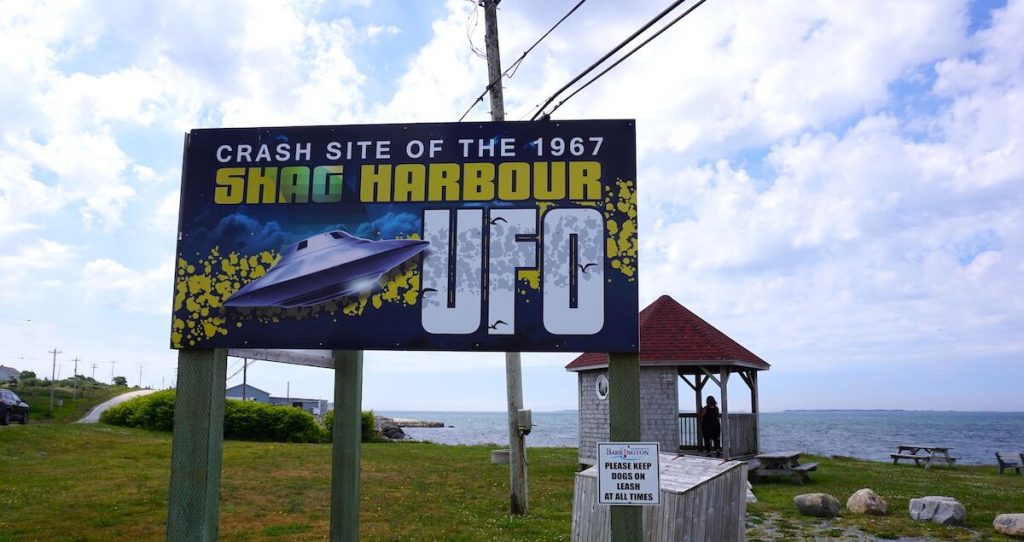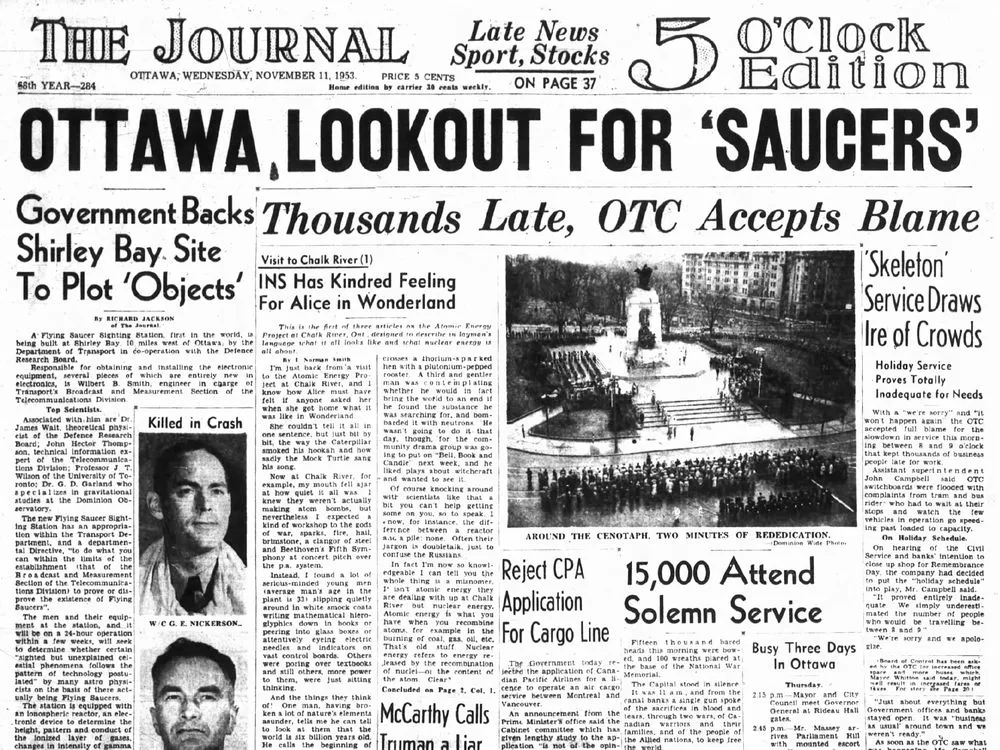Canada has a long history of UFO sightings that span decades, making it one of the most active countries in the world for unexplained aerial phenomena. The country’s vast, open spaces and clear skies have been the backdrop for numerous sightings, from flashing lights to mysterious crafts. One of the most famous cases is the 1967 Falcon Lake incident, where a man encountered two flying saucers and suffered physical burns after one of them emitted a blast of hot air. This event remains one of Canada’s most well-documented UFO encounters.
Another notable case took place in Shag Harbour, Nova Scotia, in the same year. A large, glowing object was seen plunging into the ocean, sparking an official government investigation. These incidents, along with countless other reports from both civilians and military personnel, have sparked widespread interest across the country.
The Canadian government has periodically investigated these sightings, but it has not provided concrete explanations, often attributing them to natural or man-made causes. Despite this, UFO sightings have continued to fascinate both believers and skeptics alike. In this article, we’ll explore Canada’s key UFO encounters, government responses, and the ongoing impact these phenomena have on Canadian culture and society.

Significant UFO Encounters in Canada’s History
Canada has experienced numerous UFO sightings, many of which have attracted national and international attention. These sightings have cemented Canada’s reputation as a hotspot for UFO activity. In this section, we will delve into the most significant UFO events in Canadian history, focusing on the details, witnesses, and the involvement of government authorities.
The 1967 Falcon Lake Incident
One of Canada’s most famous UFO encounters occurred on May 20, 1967, near Falcon Lake, Manitoba. Stefan Michalak, a geologist, reported seeing two flying saucers land nearby while he was prospecting. As he approached, one of the crafts emitted a blast of hot air, burning Michalak’s chest and leaving a grid-like pattern. He suffered physical symptoms for weeks. The Canadian government, along with the RCMP, investigated the incident, but no official explanation was ever provided. To this day, Falcon Lake remains one of Canada’s most credible and well-documented UFO cases.
The 1967 Shag Harbour Incident
In October 1967, residents of Shag Harbour, Nova Scotia, reported seeing a large, glowing object crash into the water. Witnesses saw lights moving across the sky before they disappeared into the harbor. The Canadian government and the Royal Canadian Navy conducted an extensive search but found no debris. The case, now known as the Shag Harbour UFO Incident, remains unsolved. UFO researchers continue to investigate the event, considering it one of the most credible mass sightings.
The 1950 Montreal Sighting
In December 1950, multiple witnesses in Montreal saw an unusual object hovering in the sky over the city. The object emitted bright lights and moved at high speed before disappearing. Several reports described the craft as metallic and disc-shaped. The sighting garnered significant attention from both the media and the Canadian Air Force, which investigated the incident. While no definitive conclusions were reached, the event remains one of the earliest major UFO sightings in Canada.
The 1975 Carignan Encounter
In January 1975, near the town of Carignan, Quebec, two young women reported seeing a bright, cylindrical object hovering near a local farm. The object made no sound but emitted a beam of light that appeared to affect the ground. The Canadian UFO Research Committee investigated the sighting, but no conclusive evidence was found. The incident remains a mystery and continues to intrigue UFO enthusiasts.
The 1974 Langenburg Event
On September 1, 1974, in Langenburg, Saskatchewan, a farmer named Edwin Fuhr saw five metallic, saucer-shaped objects hovering above his fields. The objects appeared to spin rapidly before taking off into the sky. After their departure, Fuhr found circular marks on the ground where the objects had been. The RCMP investigated the case but could not offer an explanation. The event is commemorated by a special edition coin released by the Royal Canadian Mint.
These sightings highlight Canada’s long history with UFO phenomena. From physical encounters to mass sightings, these events have left a lasting mark on the country’s culture and inspired continued interest in the mystery of UFOs.
Public and Media Response to UFO Sightings in Canada
Canada’s UFO sightings have consistently captured the public’s attention, especially following incidents like Falcon Lake and Shag Harbour. These events have sparked intense interest, not only from locals but also from international UFO enthusiasts. The country’s history of mysterious aerial phenomena has created a climate of curiosity, where public fascination is continually fueled by media coverage. High-profile incidents, such as the Falcon Lake encounter, have made national headlines, drawing attention from both skeptics and believers.

Media Coverage and Public Interest
Canadian media has played a pivotal role in amplifying UFO sightings. During the Falcon Lake incident in 1967, where Stefan Michalak claimed to encounter a UFO, the media’s coverage was extensive. Local and national newspapers ran stories about Michalak’s injuries, which he said resulted from a close encounter with a UFO. His burns, in a grid-like pattern, and his health deteriorating afterward, were widely reported by television and radio outlets. This media attention transformed the Falcon Lake event into one of Canada’s most well-known UFO encounters.
Similarly, in October 1967, the Shag Harbour incident attracted significant media interest. When witnesses reported seeing a large glowing object crash into the water off the coast of Nova Scotia, it quickly became national news. The Royal Canadian Navy’s decision to conduct an underwater search for debris elevated the credibility of the event, further intensifying media attention. Both national and international outlets covered the story, and even today, Shag Harbour remains one of the most famous UFO incidents in Canadian history.
The rise of digital platforms has continued to drive interest in UFO sightings. Websites like UFO Stalker enable users to document and share their sightings, giving everyday Canadians a platform to contribute their experiences. This shift to digital reporting has kept the public engaged, allowing for real-time tracking and sharing of sightings across the country. This increased public interaction has maintained a high level of interest in UFO phenomena.
Public UFO Organizations and Enthusiasts
Canada’s history of UFO sightings has also led to the formation of public UFO research organizations. In the 1950s and 1960s, groups such as the Ottawa Flying Saucer Club and the Vancouver Area Flying Saucer Club were created. These organizations, formed by civilians, sought to investigate sightings and share information with other enthusiasts. Regular meetings and investigations helped keep the public engaged, especially as media reports continued to bring new sightings to light.
One of the most prominent researchers in recent years is Chris Rutkowski, who has played a key role in documenting sightings through his Ufology Research of Manitoba. His annual surveys compile reports from across the country, offering a detailed look into the frequency and nature of Canadian UFO sightings. His work has gained significant media attention and is widely cited by news outlets, adding credibility to UFO research in Canada.
Government Response and Transparency
The Canadian government has shown interest in investigating UFO sightings, although it remains cautious in its approach. Following the Shag Harbour incident, the Royal Canadian Navy conducted an official search operation but found no debris. Despite the lack of physical evidence, the government’s involvement lent credibility to the event, and the media closely followed the investigation.
In the 1950s, the Canadian government launched Project Second Storey to study UFO sightings. Though the project was short-lived, it demonstrated a willingness to address public concern. Later, Project Magnet, led by Wilbert Smith, further explored UFO phenomena, though it faced skepticism from government officials. However, the military continues to document UFO sightings, and the Canadian government’s transparency in releasing this data has been praised by researchers.
